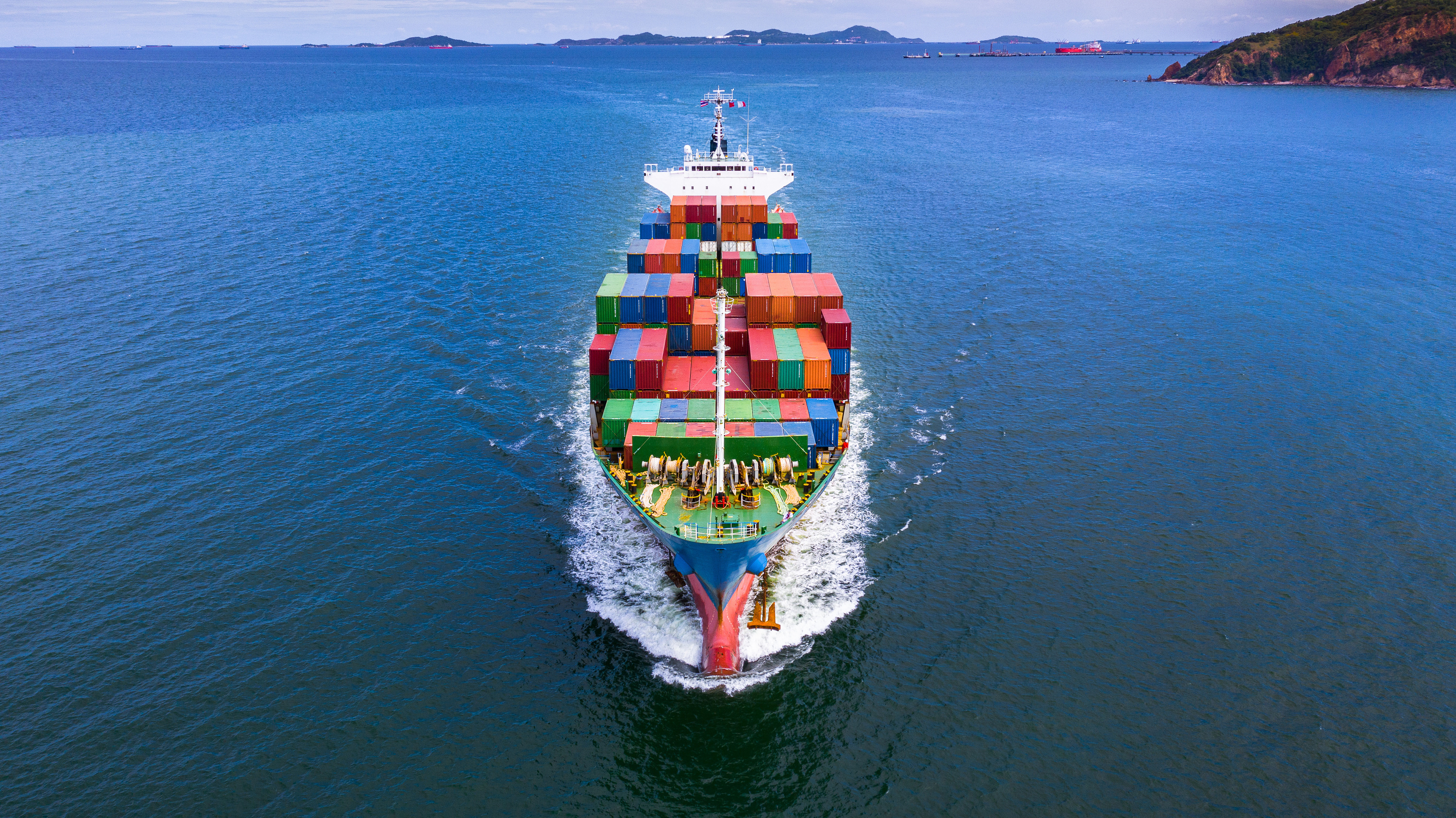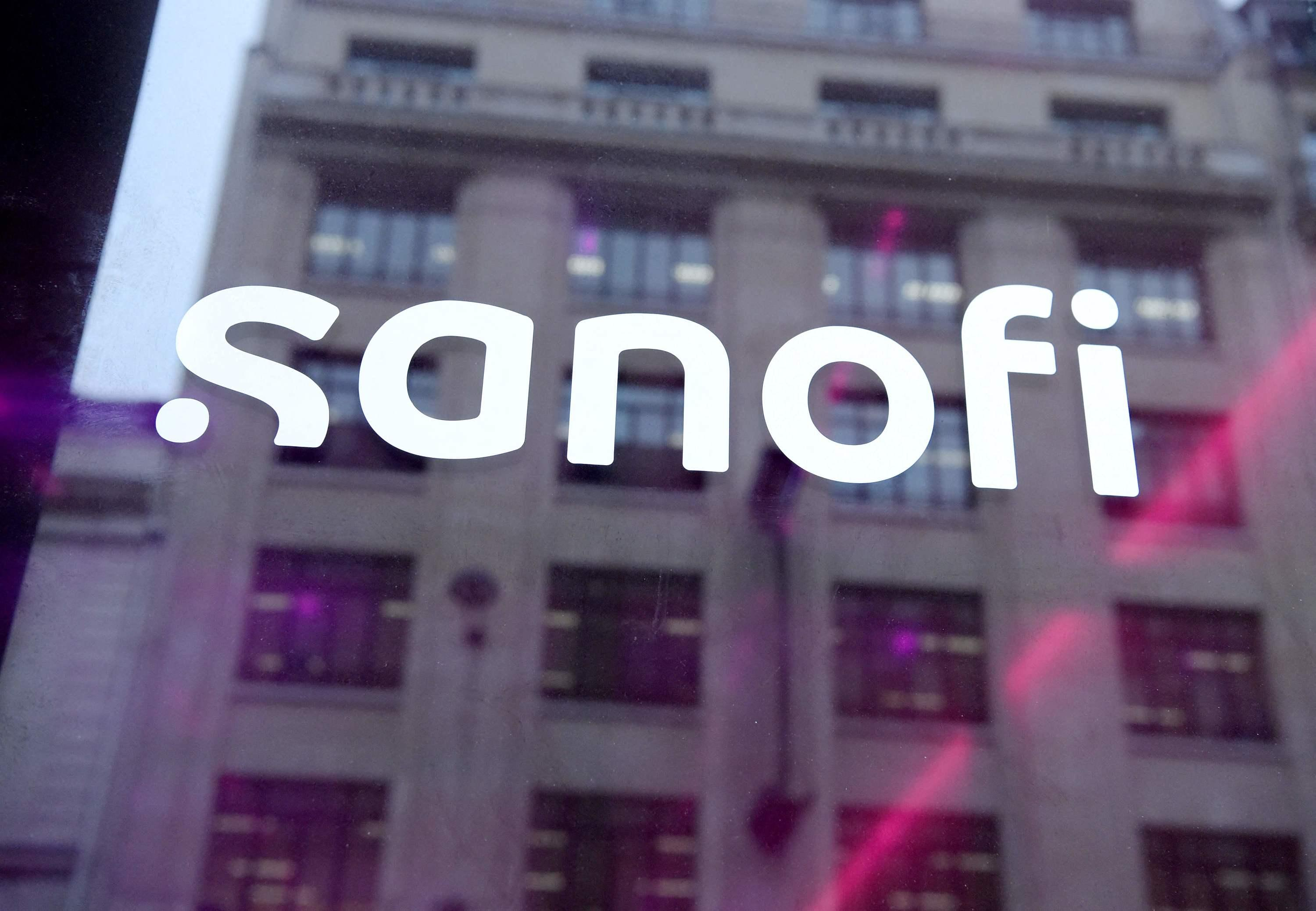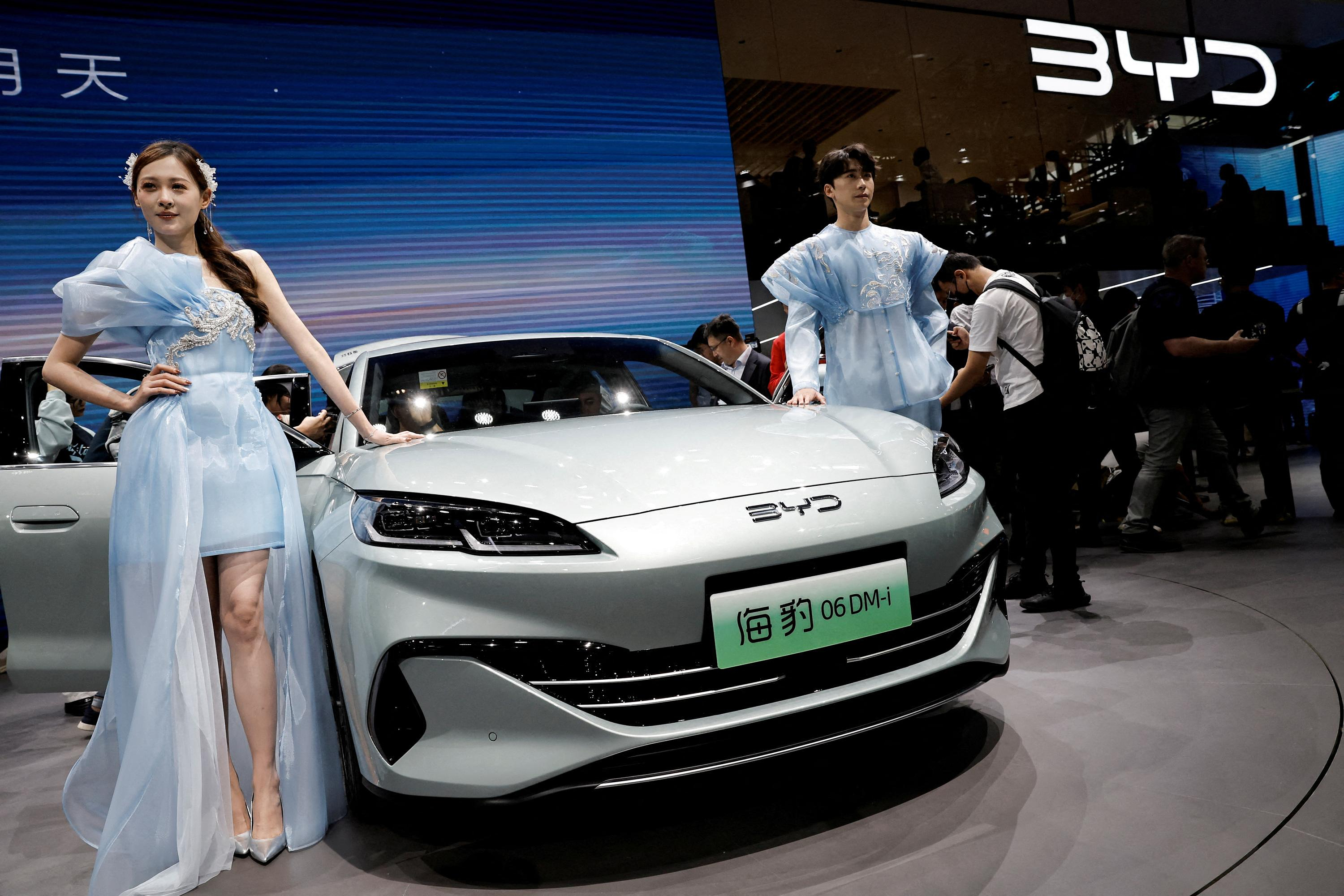In 1990, standing at 1.85 meters like a beacon, I stood in line at the bus stop, surrounded by nothing but Vietnamese people no taller than 1.60 meters, and marveled at the crowds of cyclists and the few Ladas and Moskvichs on the streets .
Today, the young Vietnamese have probably grown significantly due to fast food consumption, the many cars are from Toyota or Nissan and millions (Vietnam has 15 million more inhabitants than Germany) switched to mopeds long ago.
Whole armadas drive around, in the country mostly without crash helmets, in the cities often only with cheap construction helmets. The moped is the all-purpose weapon for transporting small animals, a dozen boxes or a family with dad in the front, mom in the back and three children in between.
Which: N24
Tourists, on the other hand, cruise comfortably along the coast on cruise ships or through the huge river delta of the Mekong on a former rice barge. You can rent a car or a bicycle, discover large or small cities individually: there are no longer any restrictions.
The typical Vietnam trip looked like this in 1990: Hanoi, Hue, Ho Chi Minh City. Nothing else was possible without an extra permit for the obligatory visa. Now, as a German, you can enter the country without a visa, discover the city, country, river and sea as you wish: everything is possible in the land of rice fields, where the farmers wear their cone hats like they used to.
Most beautiful: The Halong Bay World Heritage Site with almost 2000 overgrown karst rocks rising steeply out of the emerald green sea is one of the most impressive bays in the world.
World Heritage Hoi An, with its potpourri of Vietnamese, Chinese and Japanese architecture, is one of Vietnam's most attractive cities. No cars fit into the narrow streets, which is why everyone travels on foot or by bicycle.
Then there is the old imperial city of Hue, the Mekong Delta with the authentic floating market of Can Tho, where a tourist boat comes on 50 merchant boats or junks, and modern Saigon in the south, to which Ho Chi Minh City is no longer attached says.
By 1990, backpacking in Ko Samui, Goa and Bali had already peaked - Vietnam has passed this trend. That's why there are hardly any traveler huts on the beach in Vietnam, not even the beach volleyball game at sunset, which is obligatory elsewhere, takes place.
But: Vietnam may have missed the backpacker era, but it still attracts former backpackers with its offer. These are now well off, appreciate villas instead of huts and are conquering beaches and islands that only locals knew 30 years ago: Phu Quoc, for example, is popular in the Gulf of Thailand with the best infrastructure.
In the South China Sea you will find the Con Son archipelago with 16 islands and picture postcard beaches on many of the 775 islands in Halong Bay, especially on Ti Top and Cat Ba. The beaches Bai Xep (near Quy Nhon), An Bang (near Hoi An) or Doc Let (near Na Thrang) can also compete with the Thai and Balinese competitors.
In 1990, in communist Hanoi in the north, the receptionists were reserved to the point of dismissive towards Western tourists – after all, it could have been an American. It was different in the south: even then, tourists from the west were not class enemies, but welcome guests.
Professional hospitality prevails throughout the country today, international standards apply in good city hotels and resorts on the beaches, whether in the "Hilton" in Hanoi or in the legendary "Continental" in Saigon, where war correspondents stayed during the Vietnam War had nested all over the world.
In Hoi An, between the two mega-cities, the “Anantara” is housed in a yellow colonial-style building by the river: the best house in town – and yet here (as in other top hotels) you can still get a double room for less than 200 euros. The prices for the resorts are also affordable: you can get world-class accommodation from 300 euros per night, for example in the “Anantara Quy Nhon Villas” with 26 modern villas with a private pool right on the beach.
However, it is worth comparing: There are also luxury accommodations in Vietnam, such as “Four Seasons” or “Six Senses”, which cost 1000 euros or more per night and room (Affordable luxury hotels and resorts: anantara.com, tiawellnessresort.com, theanam.com as well as hilton.com, continentalsaigon.com).
The noodle soup Pho Bo is the national dish. That was the case 30 years ago and it is still the case today. However, the selection is much larger now, so don't be afraid to try out Vietnamese street food dishes! Most stands are supplied twice a day, chicken and meat are fresher than in our supermarkets, fish and crabs are often still alive and are only beheaded in front of the customers.
Fruit and vegetables come fresh from the tree, bush or field and not only vegetarians can be happy: the Vietnamese cook carefully and serve the vegetables nice and crunchy. The competition between the kitchens is fierce. If you're not good, you can close your shop soon. For three to four euros you will be full with pleasure.
Not particularly recommended are the often empty middle-class restaurants with a long menu - it's impossible that everything is fresh. Only in the upscale areas of the luxury restaurants of the hotels does one dine on the safe side again. As with chef Vinh Tran from “Anantara Quy Nhon”, who likes to take his guests to the market, explains everything and asks what they would like for dinner at his upscale restaurant “Sea. Fire. Salt.” would like to have.
Communism and capitalism have had an affair in Vietnam. Agriculture has long been decollectivized, and private enterprise and profits are permitted. And people take their private liberties.
One has to keep one's mouth shut politically, though, even if locals are no longer dragged to the police station for talking to westerners - like when many I spoke to for a report in 1990 were detained for a few hours.
"Tourists bring in a lot of money and we all live well," says Cuc, who runs a souvenir shop in Hoi An, summing up the prevailing philosophy. Hardly any poropaganda poster shouts from the walls these days, hardly a Ho Chi Minh statue still greets you. But there are plenty of caps and T-shirts with the image of "Uncle Ho": The communist forefather of Vietnam has become a box office hit.
"There are no more enemies," says Cuc, who experienced neither the Indochina War against France (1946-1954) nor the subsequent Vietnam War (1955-1975) against the USA. "What am I going to demonstrate for? I'm doing well. I can live how I want,” says the 27-year-old, who knows nothing but Vietnamese “freedom”.
Arrival: Non-stop from Frankfurt with Vietnam Airlines; Connections with Thai Airways or Singapore Airlines take longer but are more comfortable (vietnamairlines.com; singaporeair.com; thaiairways.com).
Entry: For Germans, a passport is sufficient for a stay of up to 14 days.
Health: No vaccinations required. Sun protection and mosquito repellent can be bought cheaply on site. Don't drink tap water.
Information: vietnam.travel
Participation in the trip was supported by Anantara Resorts. You can find our standards of transparency and journalistic independence at axelspringer.com/de/Werte/downloads.

 Poland, big winner of European enlargement
Poland, big winner of European enlargement In Israel, step-by-step negotiations for a ceasefire in the Gaza Strip
In Israel, step-by-step negotiations for a ceasefire in the Gaza Strip BBVA ADRs fall almost 2% on Wall Street
BBVA ADRs fall almost 2% on Wall Street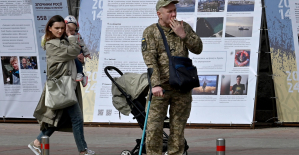 Ukraine has lost 10 million inhabitants since 2001... and could lose as many by 2050
Ukraine has lost 10 million inhabitants since 2001... and could lose as many by 2050 Sánchez cancels his agenda and considers resigning: "I need to stop and reflect"
Sánchez cancels his agenda and considers resigning: "I need to stop and reflect" The Federal Committee of the PSOE interrupts the event to take to the streets with the militants
The Federal Committee of the PSOE interrupts the event to take to the streets with the militants Repsol: "We want to lead generative AI to guarantee its benefits and avoid risks"
Repsol: "We want to lead generative AI to guarantee its benefits and avoid risks" Osteoarthritis: an innovation to improve its management
Osteoarthritis: an innovation to improve its management Ukraine gets a spokesperson generated by artificial intelligence
Ukraine gets a spokesperson generated by artificial intelligence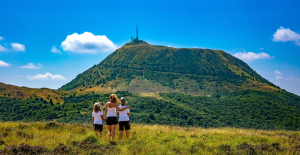 The French will take advantage of the May bridges to explore France
The French will take advantage of the May bridges to explore France Organic flour contaminated by a recalled toxic plant
Organic flour contaminated by a recalled toxic plant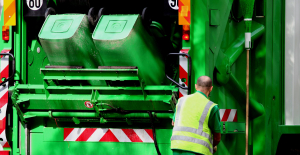 2024 Olympics: Parisian garbage collectors have filed a strike notice
2024 Olympics: Parisian garbage collectors have filed a strike notice Death of Paul Auster: Actes Sud says he is “lucky” to have been his publisher in France
Death of Paul Auster: Actes Sud says he is “lucky” to have been his publisher in France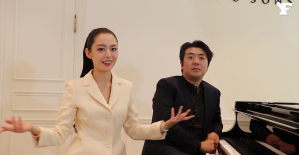 Lang Lang, the most French of Chinese pianists
Lang Lang, the most French of Chinese pianists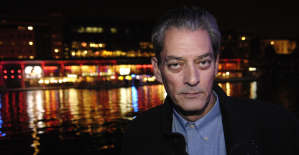 Author of the “New York Trilogy”, American novelist Paul Auster has died at the age of 77
Author of the “New York Trilogy”, American novelist Paul Auster has died at the age of 77 To the End of the World, The Stolen Painting, Border Line... Films to watch this week
To the End of the World, The Stolen Painting, Border Line... Films to watch this week Omoda 7, another Chinese car that could be manufactured in Spain
Omoda 7, another Chinese car that could be manufactured in Spain BYD chooses CA Auto Bank as financial partner in Spain
BYD chooses CA Auto Bank as financial partner in Spain Tesla and Baidu sign key agreement to boost development of autonomous driving
Tesla and Baidu sign key agreement to boost development of autonomous driving Skoda Kodiaq 2024: a 'beast' plug-in hybrid SUV
Skoda Kodiaq 2024: a 'beast' plug-in hybrid SUV The home mortgage firm rises 3.8% in February and the average interest moderates to 3.33%
The home mortgage firm rises 3.8% in February and the average interest moderates to 3.33% This is how housing prices have changed in Spain in the last decade
This is how housing prices have changed in Spain in the last decade The home mortgage firm drops 10% in January and interest soars to 3.46%
The home mortgage firm drops 10% in January and interest soars to 3.46% The jewel of the Rocío de Nagüeles urbanization: a dream villa in Marbella
The jewel of the Rocío de Nagüeles urbanization: a dream villa in Marbella Europeans: a senior official on the National Rally list
Europeans: a senior official on the National Rally list Blockade of Sciences Po: the right denounces a “drift”, the government charges the rebels
Blockade of Sciences Po: the right denounces a “drift”, the government charges the rebels Even on a mission for NATO, the Charles-de-Gaulle remains under French control, Lecornu responds to Mélenchon
Even on a mission for NATO, the Charles-de-Gaulle remains under French control, Lecornu responds to Mélenchon “Deadly Europe”, “economic decline”, immigration… What to remember from Emmanuel Macron’s speech at the Sorbonne
“Deadly Europe”, “economic decline”, immigration… What to remember from Emmanuel Macron’s speech at the Sorbonne These French cities that will boycott the World Cup in Qatar
These French cities that will boycott the World Cup in Qatar Top 14: Fijian hooker Narisia leaves Racing 92 and signs for Oyonnax
Top 14: Fijian hooker Narisia leaves Racing 92 and signs for Oyonnax Europa League: Jean-Louis Gasset is “wary” of Atalanta, an “atypical team”
Europa League: Jean-Louis Gasset is “wary” of Atalanta, an “atypical team” Europa League: “I don’t believe it…”, Gasset jokes about Aubameyang’s age
Europa League: “I don’t believe it…”, Gasset jokes about Aubameyang’s age Foot: Rupture of the cruciate ligaments for Sergino Dest (PSV), absent until 2025
Foot: Rupture of the cruciate ligaments for Sergino Dest (PSV), absent until 2025




